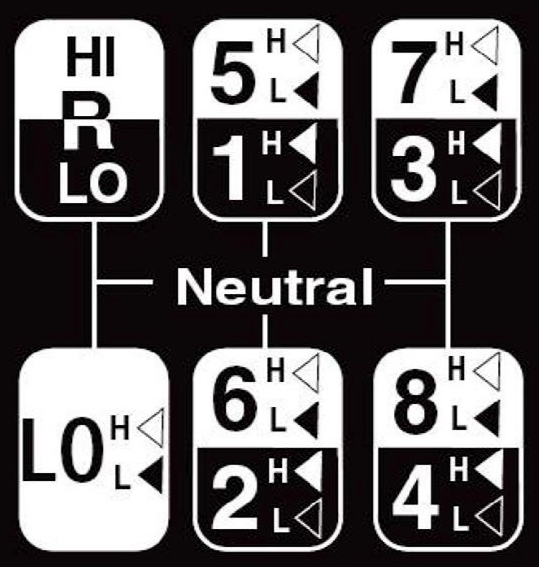Automated manual transmissions (AMTs) and non-synchronized (non-synchro) gearboxes are two transmission types used in HGVs. Each has its advantages and disadvantages, and you’ll enter many an argument professing your preference (or even ‘love’) for a specific one.
Automated-Manual Transmissions
Pros:
- Ease of use: AMTs combine the efficiency of manual transmissions with the convenience of automatics, reducing driver fatigue. You don’t need to be skilled to use them, and they pick the best gear for the load on the engine.
- Fuel efficiency: They optimize gear selection, potentially improving fuel economy.
- Reduced maintenance: Less wear and tear due to computer-controlled shifting.
- Broader driver pool: Easier for less experienced drivers to operate effectively.
Cons:
- Higher initial cost: More complex technology means higher upfront expenses (although, this is somewhat absorbed into the ranges of most European manufacturers that no longer offer non-synchro ‘boxes)
- Potential for electronic failures: Reliance on computerized systems can lead to downtime if issues arise.
- Less driver control: Some experienced drivers prefer full manual control, and that can be advantageous for things like heavy haulage.
Non-Synchro Gearboxes:

Pros:
- Durability: Simpler design leads to increased longevity and reliability. They are very well-tested over billions of miles.
- Lower initial cost: Less complex technology means lower upfront expenses.
- Better for experienced drivers: Allows for more precise control in challenging conditions such as when it’s slippery or when the load is tricky (although AMTs are getting better and better at this).
- Potentially better performance in extreme conditions: Less reliance on electronics that can fail in harsh environments.
Cons:
- Steeper learning curve: Requires more skill and experience to operate efficiently, plus a strong left leg. Most drivers get some kind of non-synchro gearbox training.
- Potential for human error: Incorrect shifting can damage the transmission or reduce efficiency, particularly when drivers like to ‘float’ the gears (change without depressing the clutch).
- Driver fatigue: Constant manual shifting can be tiring, especially on long hauls.
The choice between AMTs and non-synchro gearboxes often depends on factors such as the specific application, driver experience, route characteristics, and budget considerations. While AMTs are gaining popularity due to their ease of use and potential for improved efficiency, non-synchro gearboxes still have their place, particularly in specialized applications or with highly experienced drivers. They tend to be found on American and Japanese trucks, not Euro trucks, so they are less likely to be available in the UK.
The trucking industry continues to evolve, with AMTs becoming increasingly prevalent. However, the debate between these transmission types is likely to continue as manufacturers improve both technologies and fleet operators weigh the pros and cons for their specific needs.
